- 01/14/2022
- 21 Min Read
- By: Christian Schaefer
5 European Cars For Your Next Ski Or Snowboard Adventure
Along with a love for European cars, many employees here at FCP Euro love winter sports. Our location in Connecticut puts us within shouting distance of countless mountains with powdery snow and scenic trails, though we aren’t the only people with that access. Whether you ski out west in California and Utah or up north in Minnesota and Montana, what unites us all is the need for a snow-capable ski and snowboard hauler. Being no strangers to wintery weather, European manufacturers have built all different types of snow-safe models — some with two doors and some with five. The right vehicle is different for everyone, so here are a few of our favorite models ready to get you up to the mountain!
Volkswagen Alltrack
The Golf has been a perennial success for VW since the start of production. The various generations have had their ups and downs, but none have ever come up quite as versatile as the Mk7. Whether powered by a diesel engine, wearing a GTI badge, or propelled by an electric motor, the little hatch has grown its reputation around performance, and rightly so. The Mk7 Alltrack variant brought all-wheel-drive and a lifted suspension to the Golf wagon, providing the perfect basis for a ski runner.
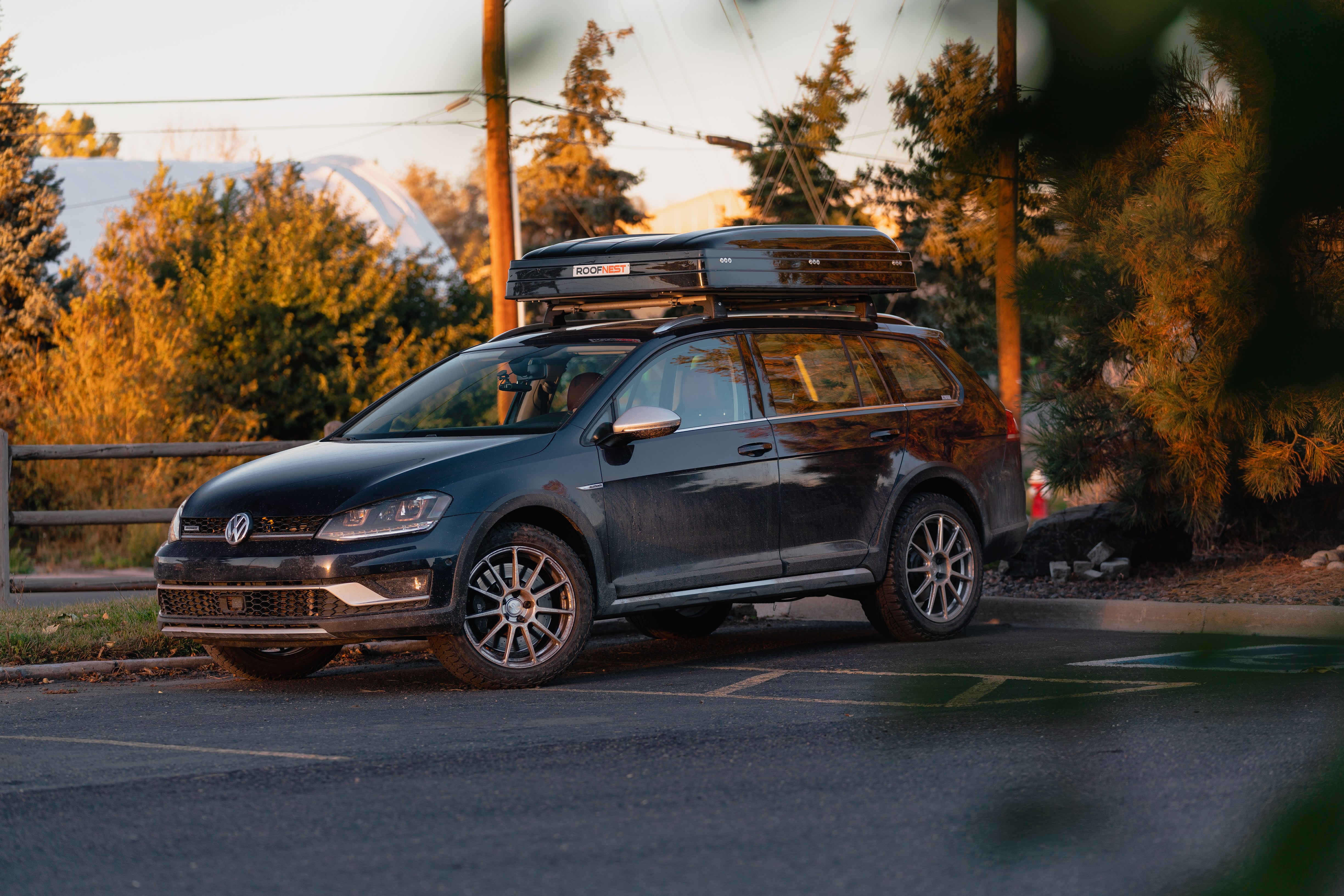
The Alltrack, while not as popular as the other Golf variants, still sold in good numbers, allowing for a sizable second-hand market. The wagon’s pricing is pretty in line with the rest of the Mk7 range, slotting between the GTI and standard Golf. The least expensive Alltracks carry the lowest trim packages and are equipped with the DSG transmission. Examples with around 100,000-miles are asking in the mid-teens. At the top of the range are the manual-equipped Alltracks. The transmission’s commonality and use in a turbocharged, lifted wagon allow sellers to ask around the $30,000 mark for late model and nicely spec’d examples.
The Golf Alltrack is a smart option for a single-vehicle household. An under-stresed engine with surprising punch sits transversely mounted in the engine bay, powering the nicely, albeit relatively inexpensively appointed interior and safety-filled chassis wherever it needs to go. The EA888 engines are well proven, and the 1.8-liter version fitted in the Alltrack is a reliable and fuel-efficient engine that makes an excellent option for DIYers. Parts are easy to reach, affordable, and easily accessible at dealerships or your favorite online retailer. Also equipped with VW’s Haldex-based 4Motion all-wheel-drive system, they provide safety and poise in the trickiest weather conditions.
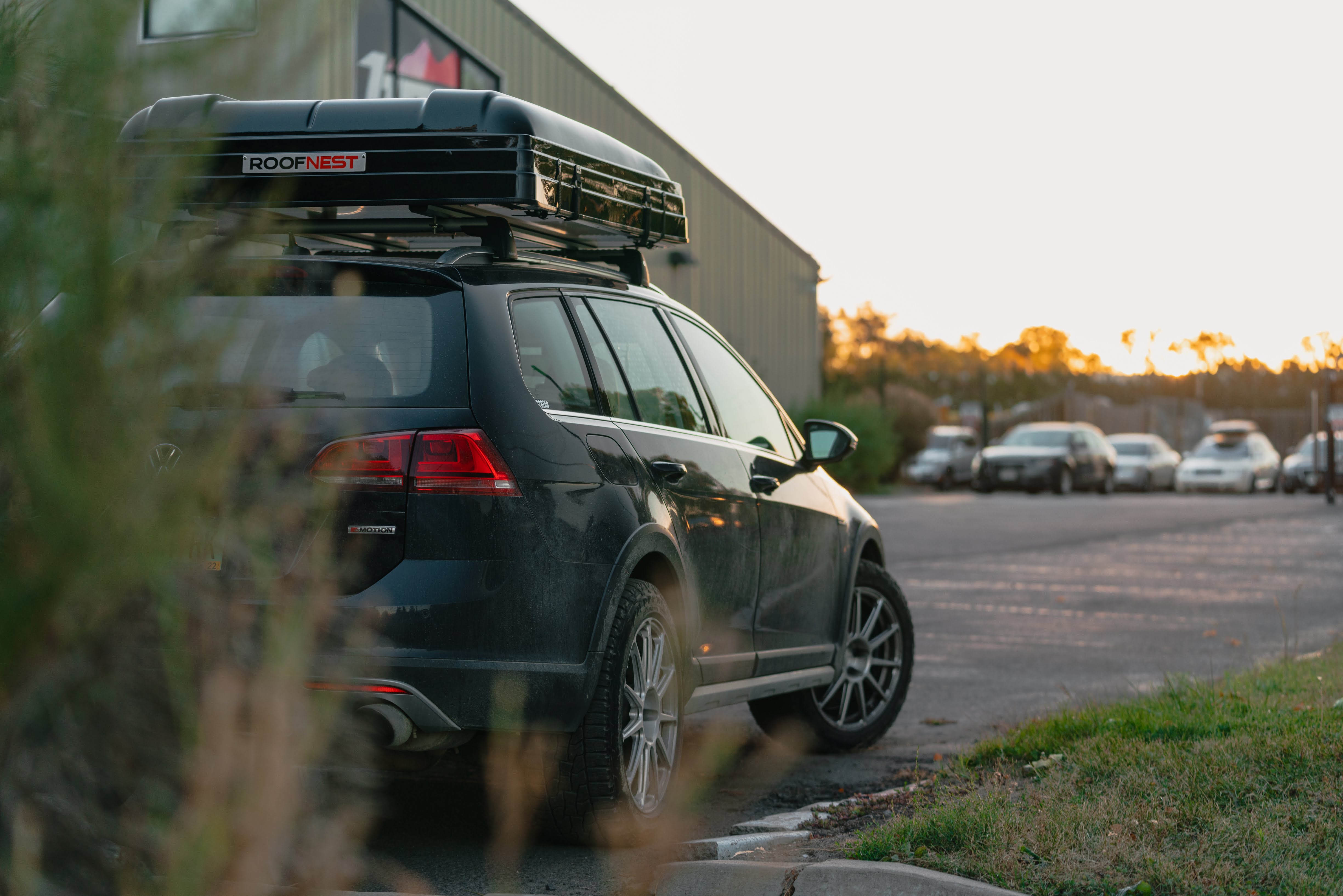
The Mk7 Alltracks aren’t the most exciting as a factory stock vehicle; however, the Mk7 platform they’re built on means there is a world of OE and aftermarket parts to bolt on that will bring the Golf's performance closer to that of an Audi S4 for much less money. The Gen3 EA888 under the hood may only produce 170 horsepower and 200 lb-ft of torque, but the engine is similar enough to the 2.0-liter found in the GTI and Golf R that several performance components can be swapped over. Equipping the 1.8 with the IS38 turbocharger from the Golf R is a bolt-on affair and can double the factory output when paired with other performance items, like a freer-flowing intake and exhaust and a remapped ECU. The DQ250 dual-clutch transmission, referred to as the DSG, makes the modifications easier as it’s capable of handling that power increase easily. The manual transmission can hold power as well, but a stronger clutch is required.
Every Alltrack is equipped with a taller suspension than the Golf, helping lend to the Alltrack name. The ground clearance is great for the snow but isn’t close to that of larger SUVs, the vehicles most people turn to in the face of bad weather. While I’m sure the Alltrack can handle deep snow equipped with the right tires, there are aftermarket options for people wanting more clearance. Strut and axle spacers are widely available from aftermarket retailers and provide the Alltrack with just over an inch of lift. Taller springs and Atlas rear shocks have also been used to give the Alltracks more clearance. According to owners, Alltracks take well to the lifted suspension and corresponding off-road tires, though the Alltrack can be lowered if less clearance is what you want. If you can avoid beaching it in the snow, the Alltrack can receive almost all of the suspension and brake components from the GTI and Golf R with the right combination of factory parts, making it a killer wagon for mountain roads.
Whether you decide to modify the Alltrack or not, it’ll provide poise and safety heading up to the mountain. The standard roof rack makes it easy to fit crossbars and a ski rack if desired, while the extensive plastic cladding on the bumpers and arches gives the Golf the rugged look and equipment needed for tricky conditions. The elongated body holds significantly more volume than the standard Golf, too, providing a spacious-enough back seat to give good access for booster-seat fiddling or winter sports gear. The EA888 engine is as reliable as they come from VW these days; more minor things like PCV and ignition coil failures are relatively common but are repairable by anyone in a driveway. More significant issues like water pump failures or stretched timing chains can occur but are a rarity. Proper maintenance is critical, especially when modifications are in play. The transmissions are going to be reliable as well, but servicing the DSG can be costly. Services come every 40,000 miles and some owners have reported costs of around $500 a service. With that said, the Golf Alltrack remains a modern and affordable mountain machine.
Audi Ur-S4/6
As lovely as it is to preserve the uncommon cars we love so much, they still deserve to be driven and used as intended. We rob the youth of the past when we don’t let them experience it, especially first hand, and what better way to avoid that than blasting through the snow in the original Audi S4/S6. The era that the Ur-S4/S6 comes from was one of the finest in terms of European automotive quality. European cars were robust, reliable, and comfortable, directly causing the stereotype of “German reliability.” Audi’s first S-model was one of those models and is an over-built, forgotten classic that’ll provide a DIYer with a reliable but regular project capable of handling any weather and putting out considerable power.
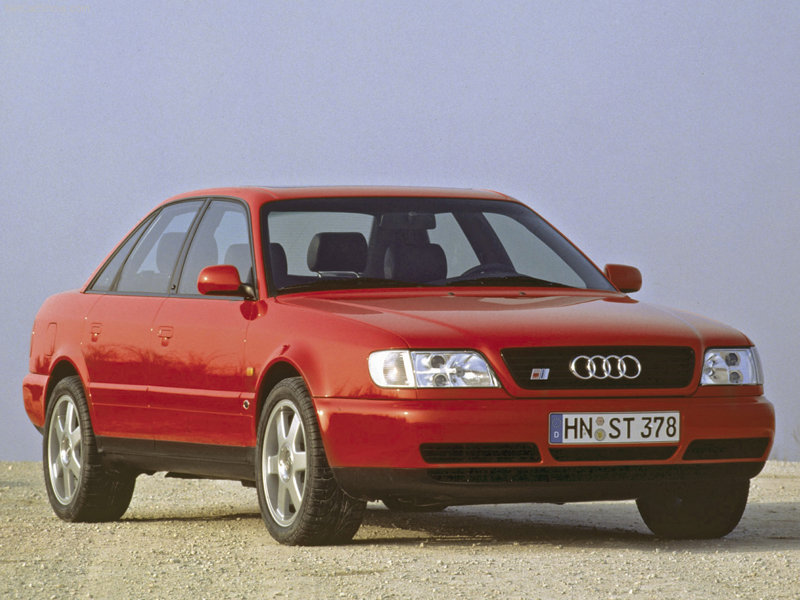
Audi was coming off of a massive decade of motorsports and showroom success in the ‘80s, and the company was primed to produce segment-challenging sports sedans. The first out of the door for 1992 was the S4, built upon the C4 Audi 100 chassis. The Audi 100 was eventually renamed the A6, so simultaneously, the S4 was rebadged as an S6. Both models made it to America in sedan, and Avant (wagon) forms with five-speed manual transmissions only. These days, the UR-S4/S6 appears most commonly for sale on Audi forums and auction websites. They’re a fairly niche model, so they can be more challenging for Craigslist and Facebook marketplace finds. Rough examples bring mid-four figures, and the nicest ones reach the upper teens.
Without much sports sedan experience, Audi stuck with what they were familiar with in the Ur-S6’s engine bay. The turbocharged AAN 20v 2.2-liter inline-five engine found in every Ur-S4 and S6 except the Plus was and is a legend. Developed directly from the knowledge gained from the Group B rally cars, the engine sported a twin-cam, four-valve cylinder head, and an intercooled turbocharger set up to produce 227 horsepower and 240 lb-ft of torque. The stock power was good for the day, but the Ur-S is a big car, and that power is lacking in today’s terms. Thankfully, there is a large aftermarket dedicated to the AAN, and there are improved pieces of just about every component in the engine. A larger turbocharger and supporting bolt-on bits regularly push the 20v turbo to right around 400 horsepower before stronger internal components are required. However, the AAN’s best feature isn’t the ability to make power but its reliability.
Passionate and long-time owners have regularly taken the engine, and the Ur-S models above 200,000 miles, with handfuls of others well beyond that number. The key to keeping one alive that long? Proper maintenance! A majority of the engine's common faults revolve around plastic and rubber lines having become too old and brittle, leading to cracks and leaks. Other common faults revolve around a few engine sensors like oil pressure and camshaft position. While later Audi S-cars can be a nightmare to work on, the Ur-S cars have an enormous engine bay relative to the size of the AAN. Because of that, the Ur-S variants, and the Audi 100 platform in general, are exceptionally welcoming to DIYers. Parts can be tough to find, but the ease of accessibility and repair makes them lovely to own and operate.
Like the engine, the rest of the car is built like a tank. The remainder of the drivetrain, the manual transmission, and the quattro all-wheel-drive system are as bulletproof as the engine. Nearly every Ur-S car set for the American market had leather upholstery and Recaro sport seats fitted to the front, though a few cloth upholstered vehicles exist. Both the front and rear seats are heated, though the heating elements in the seats can fail, leaving a cold spot. The most expensive interior repairs are electrical components like climate control units. The LCD screens lose pixels until they’re illegible, rendering them mostly useless; other components have light bulbs go out.
Suspension components are a bit old-school, but aftermarket bits do exist and can make the big sedan or wagon feel a little lighter on its feet. Standard brake upgrades feature calipers, pads, and rotors from the 993/996 and Boxster Porsche models. When looking for model-specific parts, though, they can be difficult to find and are the only roadblock in easy repairs. Their age and a lack of support from Audi means some components are only found used on eBay and forums. Each C4 chassis was double galvanized for rust protection, too, but salty roads have had their way with more than a few examples. The Ur-S4/S6 isn’t the newest car on the list, but it’s big enough to carry plenty of snow sports equipment in the harshest conditions, quickly and safely.
BMW E30 325iX
“Miata is always the answer” is a saying that has floated around the internet for quite some time. The little Japanese roadster is cheap, readily available, reliable, and has some of the best handling characteristics of any car, period, so it’s easy to understand why. I do believe that the saying is a little short-sighted, though. As much as I like the Miata, other chassis have all the roadster’s best qualities wrapped in a more winter-friendly package; chassis like the E30. Their inexpensiveness, parts availability, and all-wheel-drive system make them great winter beaters sure to get you to and from the mountain with fun to be had.

BMW’s second generation of 3-Series has been a track day and tuner scene darling since it hit the showroom floors. The E30 was revered for its balance and poise when driven hard, becoming the poster child for BMW’s “Ultimate Driving Machine.” However, the only thing preventing the E30 from perfection was its inclement weather capability. With most weight over the nose and the driven wheels outback, the 3-series struggled with traction when the driving got slippery. BMW introduced the 325iX to solve that issue as the E30 now had all four wheels powered. The new model was offered from 1988 through 1992 and has become a tough model to find. Current prices have the worst condition examples around the $6000 mark, while the best stuff commands closer to $15,000.
The 325iX is powered by BMW’s normally-aspirated M20 inline-six engine. The 2.5-liter mill was good for 168 horsepower and 164 pound-feet of torque when new, perfectly suitable to push around a chassis weighing less than 3000 lbs. Engine swaps are common for the E30 chassis, but they aren’t necessary for a 325iX set up to tackle the snow. The M20 is a reliable engine with regular maintenance, far more than any new BMW unit, so they’re perfect for daily duties. Our very own Content Director, Michael Roselli, was able to experience that first hand. “The 325 was an absolute tank; it was like a tractor,” he said, “You shouldn’t ever want or need another snow car than this one.” While that’s a bold claim, it’s easy to understand why. The era that the E30 comes from produced vehicles full of feel and character with good build quality and German reliability. Today where everything we drive is filled with electronics and feels heavy, the E30 is a breath of simplicity and function.
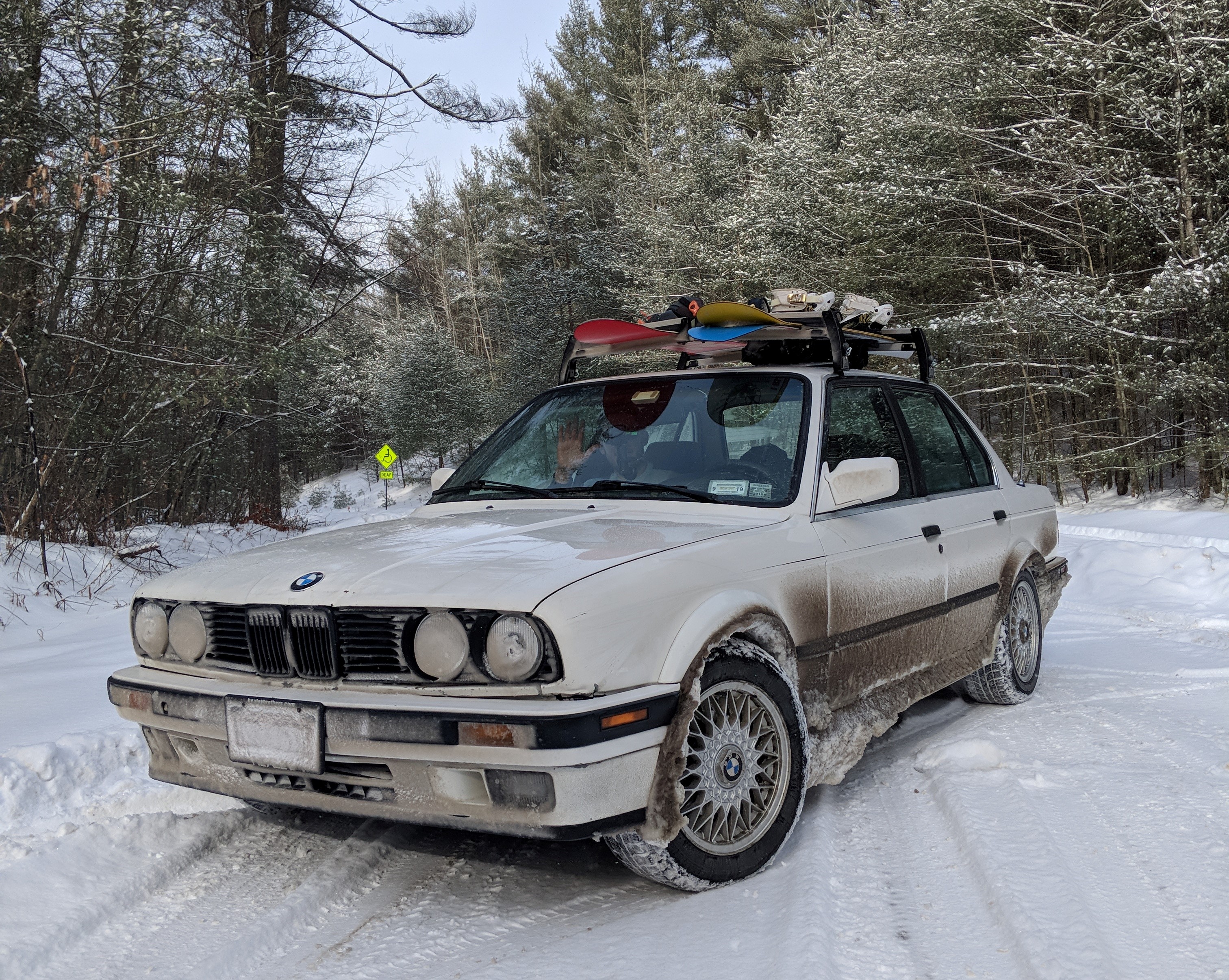
Externally, there isn’t much to differentiate the 325iX from a 325i beyond the drivetrain and the unique fender flares. All iXs were fitted with flares about 3cm wider than the rear-wheel-drive examples, along with a set of matching side skirts. Those flares and skirts have become a popular and sought-after upgrade for the E30, though few OE sets exist in the wild. The rest of the car, like the suspension and brake components, are all standard E30 bits. The aftermarket is full of suspension and brake upgrades of every kind for cars suited to endurance racing or stage rally. However, according to Roselli, all that’s really needed for grip in the snow are a set of snow tires. “I got snowed into a parking lot, and they were only letting out 4x4 trucks because of how deep it was. All I did was brush the snow off the top and drove right through the nearly bumper-deep snow. The Blizzaks were amazing.”
There’s only one sticking point in the way of owning a 325iX these days, and it’s affecting the Miata, too. The motoring world knew what a gem the E30 was for a long time while they remained cheap and available, but today, parts are becoming tough to find, as are the cars, and that’s caused prices to jump. The overall state of the market isn’t helping either, causing the E30’s value to balloon over the last five years. Add in the fact that the 325iX is one of the more uncommon variants in the US, and you’ve got yourself a quickly appreciating classic. If you can find one, though, it’ll be well worth it. There’s a reason so many people gush over this chassis, and you really have to experience one first hand to understand it fully.
BMW F15 X5
An SUV is for you if you aren’t concerned with handling performance and would prefer to head to the mountain in maximum comfort and winter capability. There are loads of capable European SUVs out there on the second-hand market to choose from, though none cover a market spread quite like the F15 X5. The big SAV came with a load of different options allowing each buyer to fit their X5 how they wanted. Now, there's a second-hand market flush with X5s in various forms in all sorts of conditions across the country. If there was ever a quality but safe choice, it’s this one.
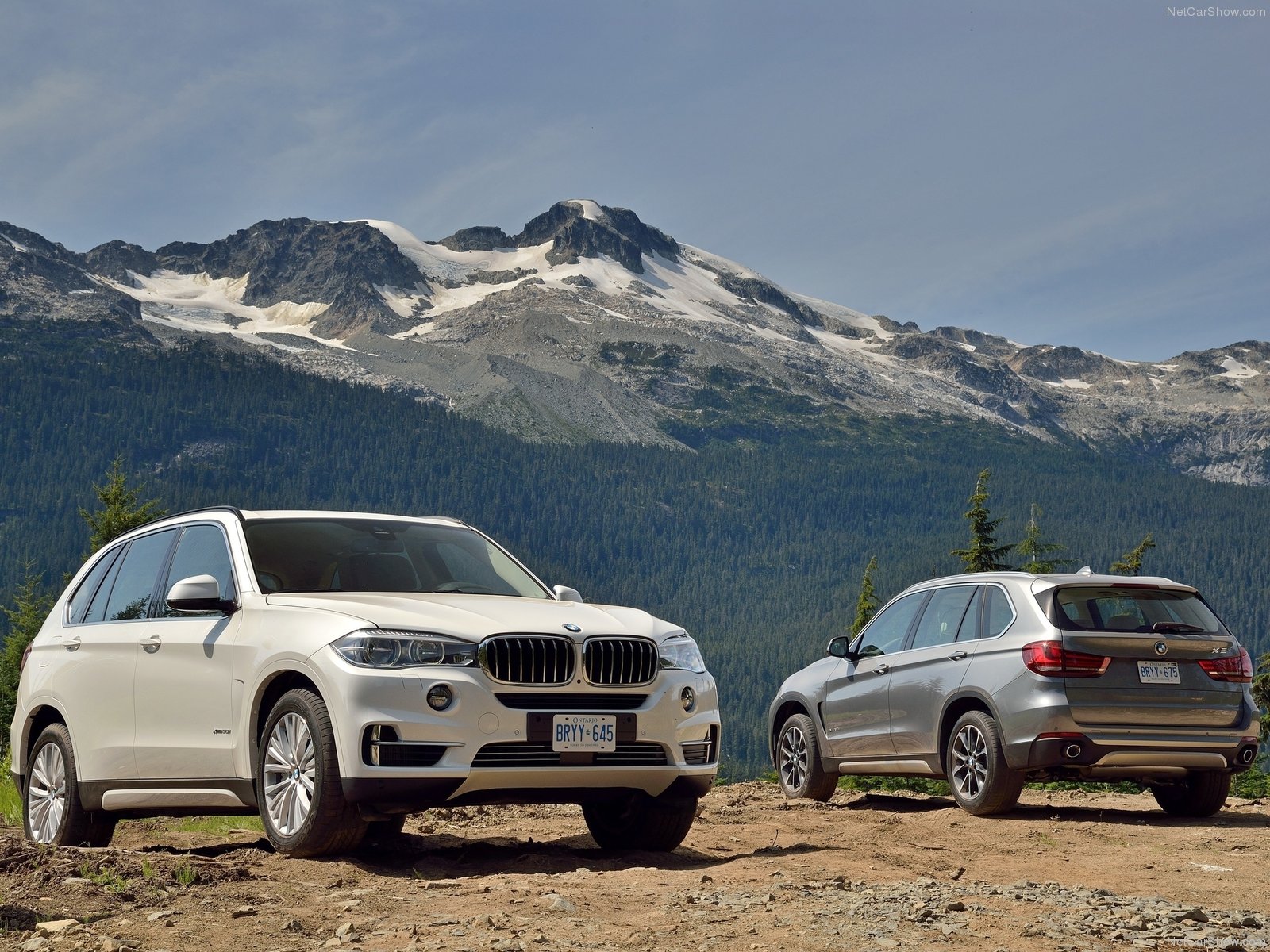
Finding an F15 X5 is about as easy as it gets. Hopping on to your favorite car sales website will reveal an excess of X5s ready for a new owner. Pricing depends heavily on options, year, and mileage. The early 2014 models with around 100,000 miles can be snapped up in the high teens to low twenties. Lower mileage early cars and higher mileage late cars hover around the high twenties to mid-thirties. The most expensive models will sit around the $60,000 mark and be the newest xDrive50i models with low mileage. Truly take some time to explore every avenue and look at each X5; there are some real deals and interestingly optioned examples out in the wild.
BMW offered the F15 X5 between 2014 and 2018 in just about every market in a handful of different variants. The two most common, and the ones you’ll want for a ski-mobile, are the xDrive35i and the xDrive50i. The former packs the N55 3.0-liter inline-six, fitted with a twin-scroll turbocharger and direct fuel injection. The relatively tuner-friendly engine provides plenty of push for the SAV with 302 horsepower and 295 lb-ft of torque. The latter model uses the N63TU, a 4.4-liter twin-turbocharged V8 that produces 444 horsepower and 479 lb-ft of torque. Mated to the back of either engine is an eight-speed automatic transmission built by ZF. It’s called the 8HP and is used by a majority of automakers around the globe because of its speed, reliability, and smoothness. The transmission then sends the engine power through a transfer case that splits power between the two axles, making up the core of BMW’s xDrive.
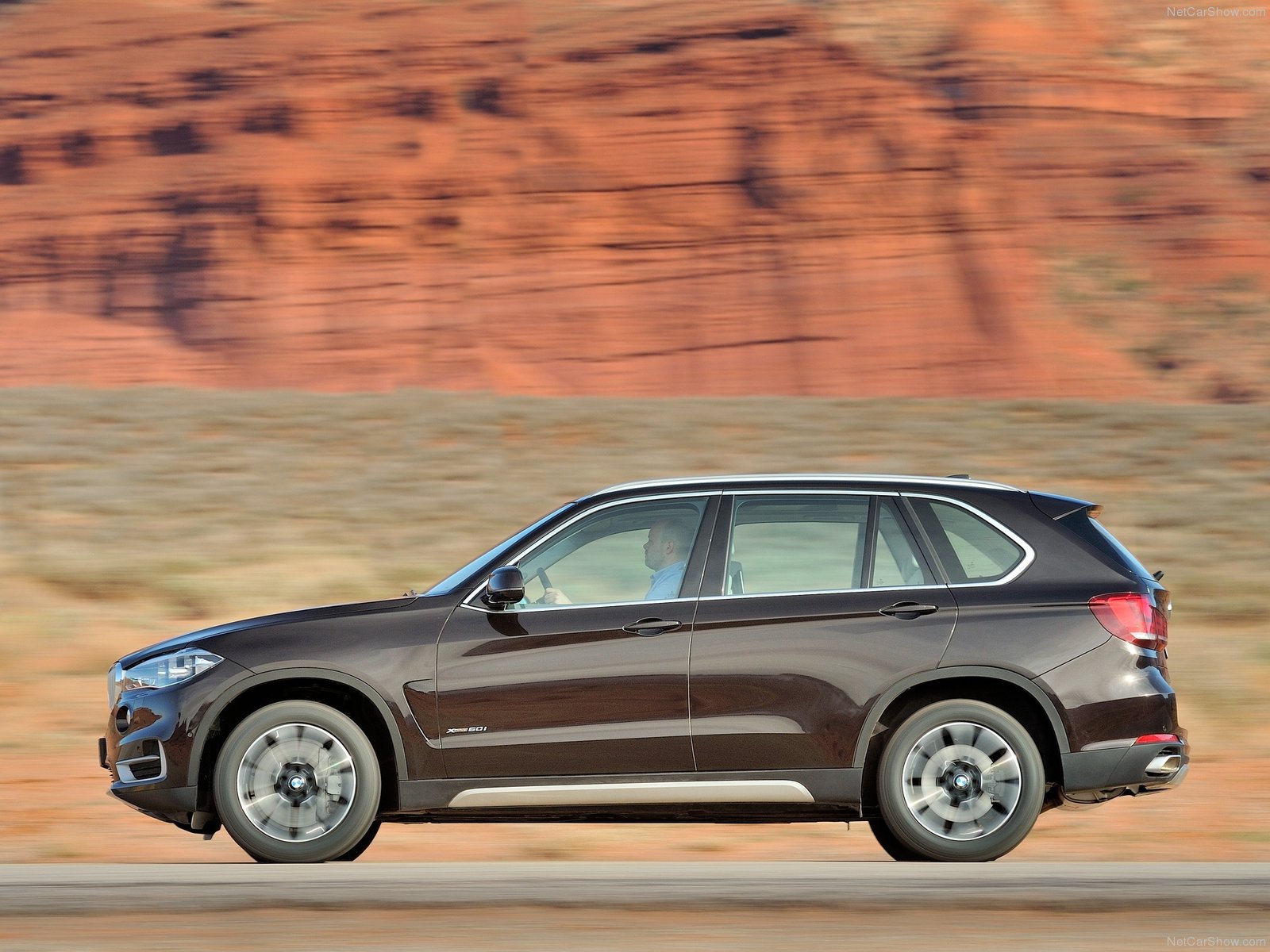
The best thing the X5 has to offer over all other options on this list is the luxury it provides. BMW trimmed the basic xDrive35i models in “SensaTec” vinyl upholstery, but the leather was part of several optional packages that most examples sport. The xDrive50i models came equipped with leather as standard and 16-way adjustable “multicontour” seats. The 16-way ultra-adjustable multicontour seats were available for the 35i models through the Luxury Seating Package, which also included ventilated front seats. Heated front seats came standard on every model, and heated rear seats, as well as a heated steering wheel, were part of the Cold weather package. Another option you might want to have for a family ski vehicle is third-row seating. A common find on the F15, the third-row seat also ensures that the X5 is fitted with self-leveling rear air suspension. Additional luxury-focused optional equipment includes Bang & Olufsen surround-sound audio system, a rear-seat entertainment system, soft-close automatic doors, and upgraded/extended leather.
If you’re lucky enough to find yourself in a 2018 model, you’ll likely have some warranty time left which is excellent considering BMW repairs aren’t cheap, and the two most common engine options aren’t the most reliable in the world. You can find out everything you need to know about the N55 right here, but in short, it’s a good performer that has trouble with oil leaks and high-pressure fuel pumps. The N63TU, on the other hand, is quite a bit more problematic with significant timing chain and oil consumption issues. BMW does offer help with engine issues relating to those problems thanks to a class-action lawsuit, so there should be some coverage should they pop up. The xDrive35d with the turbo-diesel N57 engine is also an excellent choice for the F15, though they can be harder to find. The diesel engine is more reliable than the gas-powered counterparts, though, so they are worth the search. Beyond that, a set of snow tires will set the X5 up for complete winter domination.
Porsche 996 Carrera 4/4S
One ring to rule them all and one car to drive rings around them. Usually, there would be some sort of Audi attached to that statement, but not today. The Porsche 911 has been around for a long time and in that span has accomplished several achievements, including countless endurance racing records and winning the snowy Monte Carlo Rally three years on the trot between 1968 and 1970. The rear-engined coupe was always meant to be an all-weather sports car though few actually take advantage of that. Clearly, the 911 isn’t everyone’s go-to ski machine, but I’m here to make a case for it.
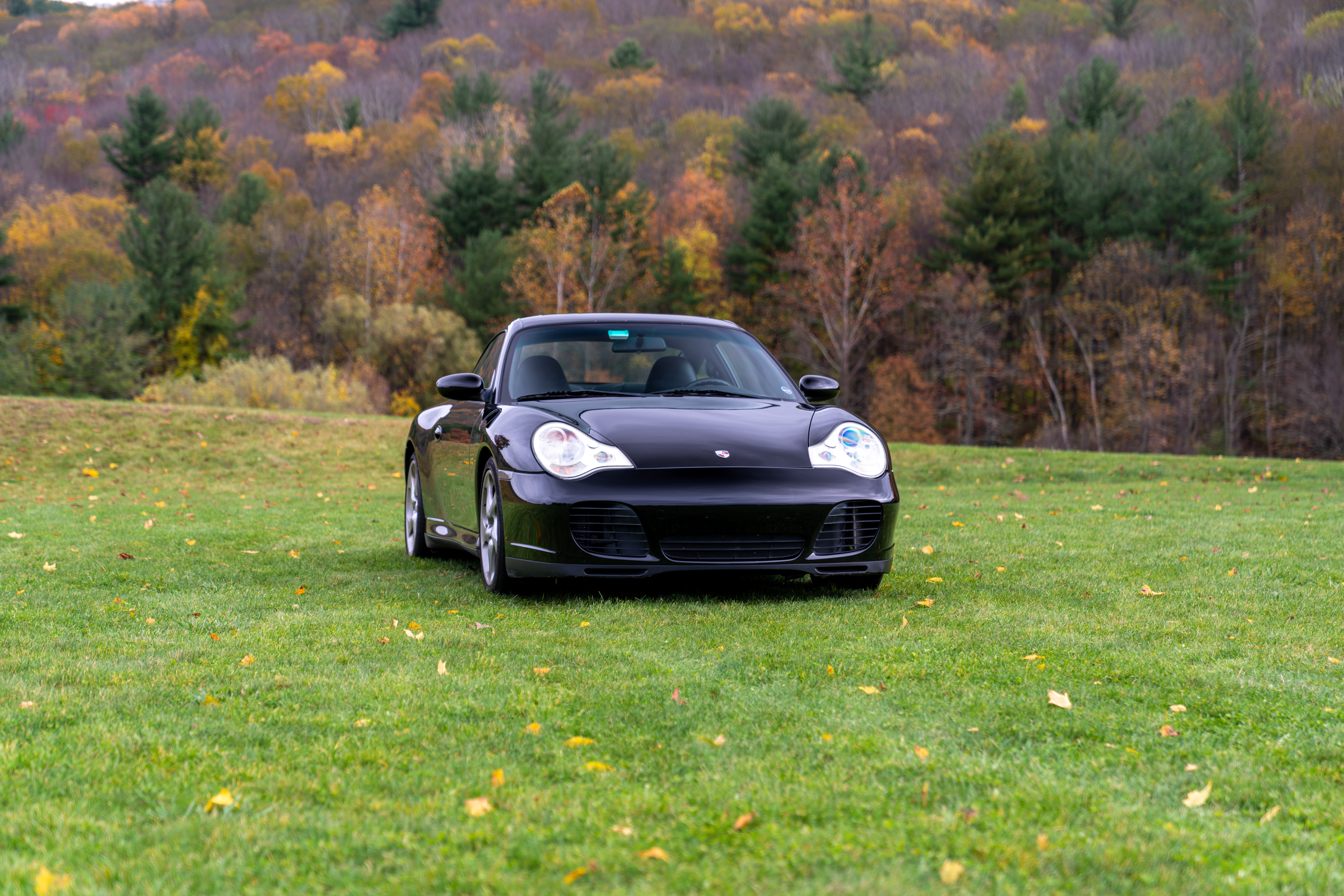
Truthfully, every 911 can become a ski hauler with the right equipment. The rear-engine placement places most of the weight over the rear wheels, aiding with traction regardless of how many wheels are driven. Some of the oldest models are potentially the best with sub-2500 lb curb weights and super skinny tires around 185-section wide; they can easily cut right through the snow. Porsche even included an optional ski rack knowing that the 911 would be used in that context. However, the best example for maximizing modernity, comfort, and all-weather capability, while keeping the cost from reaching salary levels is the 996 Carrera 4.
The 996 Carrera 4 was available throughout the 996 model run in various forms. The pre-facelifted 996s, the 996.1s, featured the Carrera 4 as a coupe or cabriolet. Post-facelifted models, the 996.2s, offered the Carrera 4 Cabriolet, the Carrera 4S Coupe and Cabriolet, and the Targa 4. The most available and least expensive examples are the 996.1 cabriolets, followed by the coupes. Figure around $20,000 for the 996.1s, depending on condition and options. The 996.2 Carrera 4S coupe sits at the high end of the range at about $40,000. The Targa and C4S cabriolet sit between the former two. There are a few different engines and a few chassis differences between them, though they all provide excellent traction in the snow with their all-wheel-drive systems.
The water-cooled M96 engine that the 996 is so infamous for is slung out the back of each 996 variant. The earlier cars use a 3.4-liter engine producing 296 horsepower and 258 lb-ft of torque, and the later cars feature a 3.6-liter engine that produces 320 horsepower and 276 lb-ft of torque. Those engines are attached to a six-speed manual or five-speed automatic transmission that splits power through a viscous coupling, sending some to the front wheels. The only apparent weak link in the powertrain is the engine’s propensity to score cylinders and kill IMS bearings, but the rest is excellent. The transmissions are generally trouble-free, and the viscous coupling and front differential have proven to be near flawless. With so many 996s having solved their engine issues, finding one with documented preventative maintenance shouldn’t be any trouble.
The 911 is a sports car for tarmac roads and is delivered as such. Good dry weather handling characteristics call for stiffer suspension with reduced ground clearance, two things that don’t make for a good winter car. However, the stock US-spec suspension positions the 996 Carrera 4 high off the ground for a sports car, with firm but not stiff suspension. It’s no SUV suspension, but I wouldn’t exactly call it a GT3 either. The Carrera 4S uses the suspension from the Turbo, with a stiffer and lower ride than the Carrera and Targa 4s. Though not as suited for the wintery weather, relatively speaking, numerous 996 C4S owners will attest to their snow capabilities.
Using a 911 as a winter ski car comes down to one thing, and that’s snow tires. Swapping out the wide and sticky summer tires for the skinniest snow tires to fit the 996 will make the 911 a suitable snow-capable vehicle. The thinner tires will cut through the snow, and the aggressive tire tread will work with the all-wheel-drive system to grip into it. Once the snow tires are on, all you’ll need is a ski rack to carry your sticks or board. Sure, the 996 can’t tackle the deepest stuff, but a few inches of powder won’t slow it down. Then, when the summer is over, you swap back on the summer tires and hit the race track for some quick and consistent laps or your favorite mountain pass for a scenic drive through the hills. How many other cars on this list can handle that?
Whether skis or snowboards, west coast or east, these models with some snow tires equipped will take you to and from any snowy mountain with ease. These aren’t the only ski-capable models out there though. Europe has produced countless vehicles out there for the task, it just depends on what you’re looking for. So what’s your perfect ski machine? Is it an Audi RS6 Avant or an XC70? Whatever it is, we want to hear about it. Let us know in the comments below what and why your ride is the best. As always, subscribe to our YouTube channel and follow along on the DIY Blog for more daily content!











